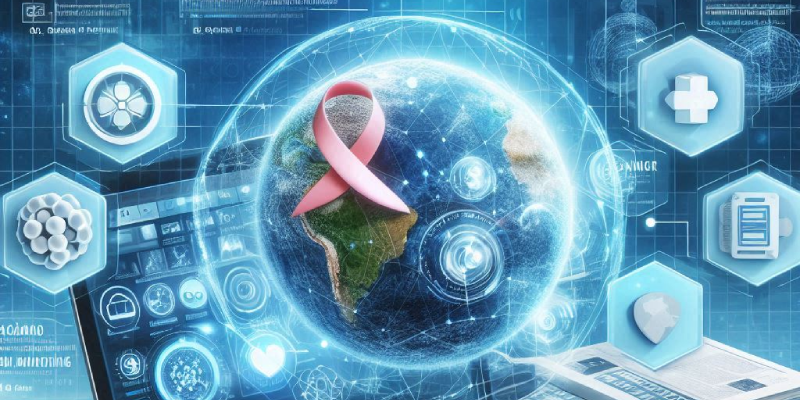Cancer care is complex and often requires frequent medical visits, which can be challenging for patients in remote or underserved areas. Telemedicine and remote monitoring are transforming the landscape of cancer treatment by making care more accessible and convenient. This article explores how these technologies are enhancing cancer care, particularly for those who face barriers to traditional healthcare access.
The Role of Telemedicine in Cancer Care
Expanding Access to Specialists
Telemedicine allows patients to consult with oncologists and specialists regardless of geographical barriers. Through video consultations, patients in rural areas can receive expert advice and treatment plans without the need for long-distance travel. This is particularly beneficial for initial diagnoses, second opinions, and specialized care that may not be available locally.
Continuity of Care
Frequent check-ups are vital in cancer treatment, but travel can be burdensome, especially for those undergoing rigorous therapies. Telemedicine enables continuous monitoring and follow-up appointments, ensuring that patients remain in close contact with their healthcare providers. This continuous care can lead to better management of symptoms, timely adjustments to treatment plans, and improved overall outcomes.
Multidisciplinary Care
Cancer treatment often involves a team of specialists, including oncologists, radiologists, surgeons, and palliative care experts. Telemedicine facilitates multidisciplinary team meetings, allowing for comprehensive care planning and coordination. This integrated approach can lead to more personalized and effective treatment strategies. 
Remote Monitoring in Cancer Treatment
Real-Time Health Data
Remote monitoring involves the use of devices and technologies to collect and transmit health data in real-time. Wearable devices and home monitoring systems can track vital signs, physical activity, and treatment adherence. For cancer patients, this means that healthcare providers can monitor their condition continuously, even between visits.
Early Detection of Complications
Remote monitoring can detect complications or adverse effects early, enabling prompt intervention. For instance, monitoring devices can alert healthcare providers to signs of infection, dehydration, or other issues that may arise during chemotherapy. Early detection and intervention can prevent hospitalizations and improve patient outcomes.
Patient Empowerment and Engagement
Remote monitoring empowers patients to take an active role in their care. With access to their health data, patients can better understand their condition and treatment progress. This engagement can lead to improved adherence to treatment plans and lifestyle recommendations, ultimately enhancing the effectiveness of care.
Case Studies and Real-World Applications
Rural Cancer Care Programs
Several rural cancer care programs have successfully integrated telemedicine and remote monitoring. For example, the University of Kansas Medical Center’s tele-oncology program connects rural patients with urban cancer specialists, significantly reducing travel time and improving access to high-quality care. Similarly, the University of Virginia’s Cancer Center Without Walls program uses telemedicine to provide rural patients with consultations and follow-up care.
Home-Based Chemotherapy Monitoring
Innovative programs are using remote monitoring to manage chemotherapy side effects at home. Patients receive wearable devices that track vital signs and symptoms, transmitting data to healthcare providers in real-time. This approach has been shown to reduce emergency room visits and hospitalizations, as issues are identified and addressed promptly.
Virtual Support Groups
Telemedicine extends beyond medical consultations to include psychological and emotional support. Virtual support groups provide cancer patients with a platform to connect with others facing similar challenges, reducing feelings of isolation and improving mental well-being. These groups can be facilitated by healthcare providers or patient advocacy organizations, offering a structured and supportive environment.
Challenges and Future Directions
Technological Barriers
While telemedicine and remote monitoring offer significant benefits, technological barriers remain. Access to reliable internet and digital literacy can be limitations for some patients, particularly in very remote or low-income areas. Efforts to improve infrastructure and provide education on using these technologies are essential.
Data Privacy and Security
The transmission of health data raises concerns about privacy and security. Ensuring that telemedicine platforms and remote monitoring devices comply with regulations like HIPAA (Health Insurance Portability and Accountability Act) is crucial to protect patient information.
Integration with Traditional Care
Integrating telemedicine and remote monitoring with traditional healthcare systems requires coordination and communication. Developing protocols and training healthcare providers on the use of these technologies can facilitate a seamless blend of virtual and in-person care.
Telemedicine and remote monitoring are enhancing cancer care by making it more accessible, especially for patients in remote or underserved areas. These technologies offer the promise of continuous, personalized, and coordinated care, leading to better patient outcomes and quality of life. As healthcare systems continue to embrace and integrate these innovations, the future of cancer care looks increasingly promising, with the potential to reach and benefit a broader patient population.

